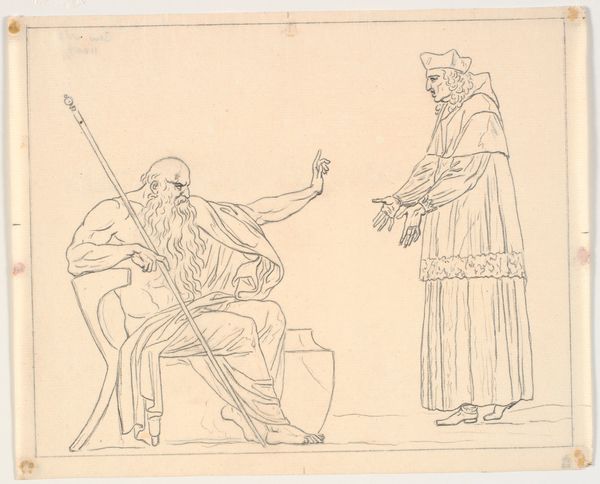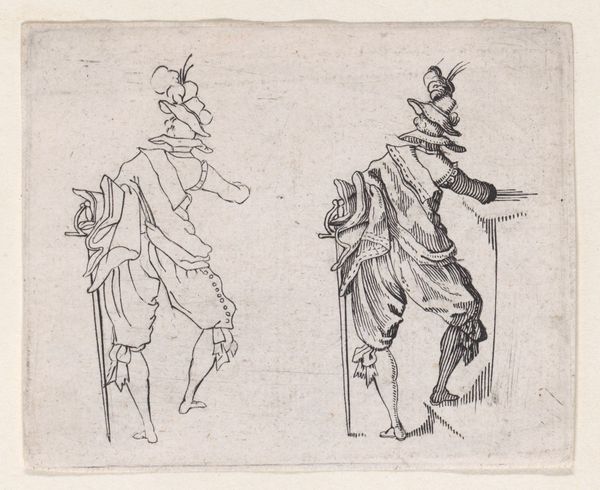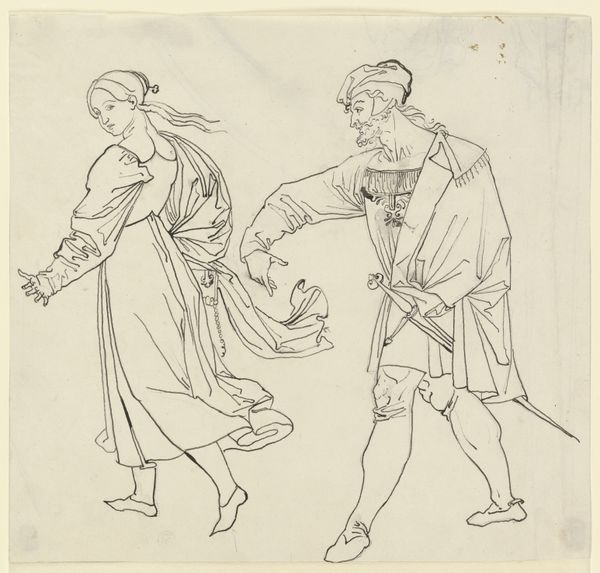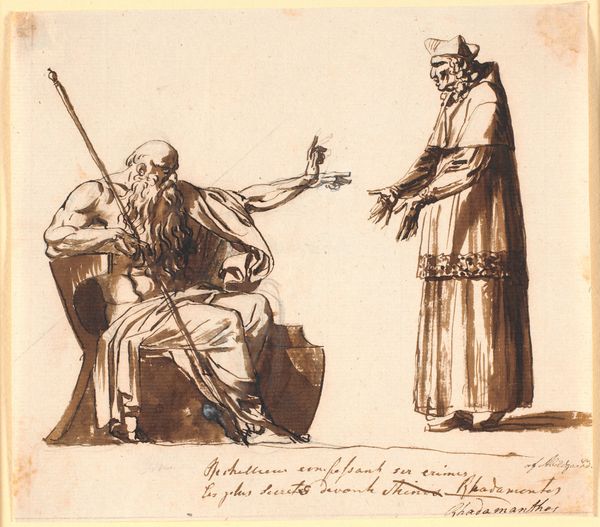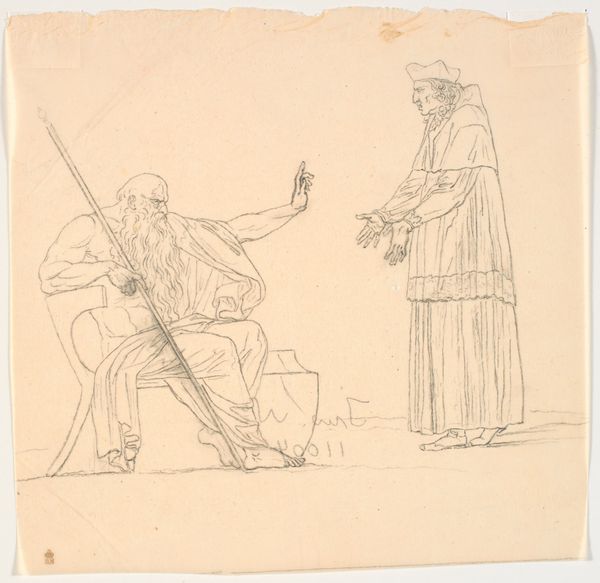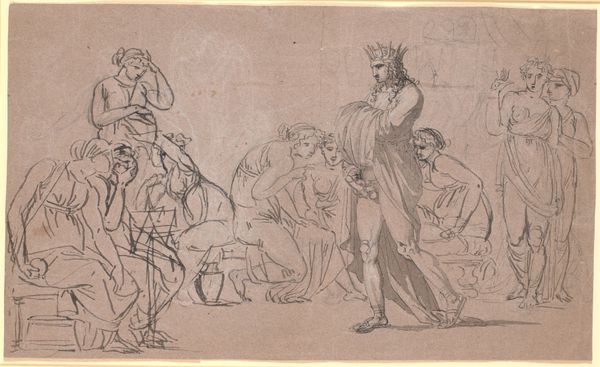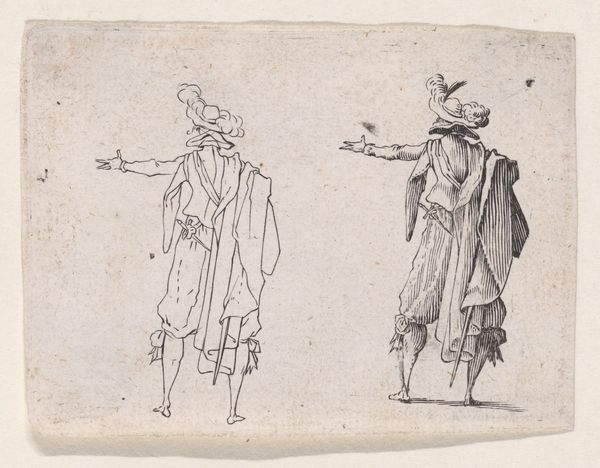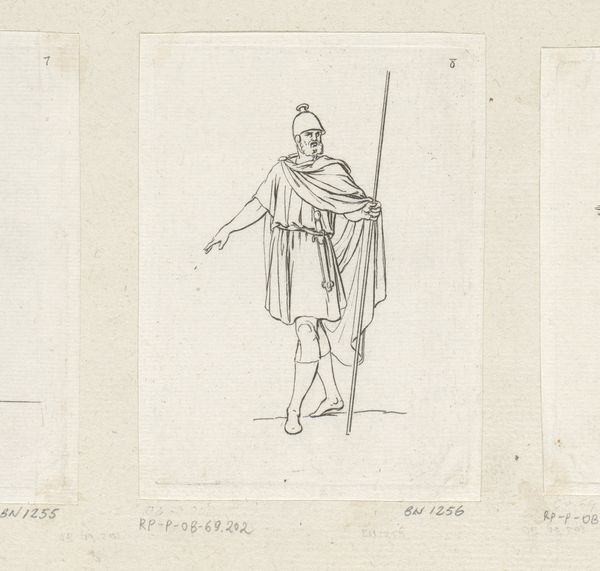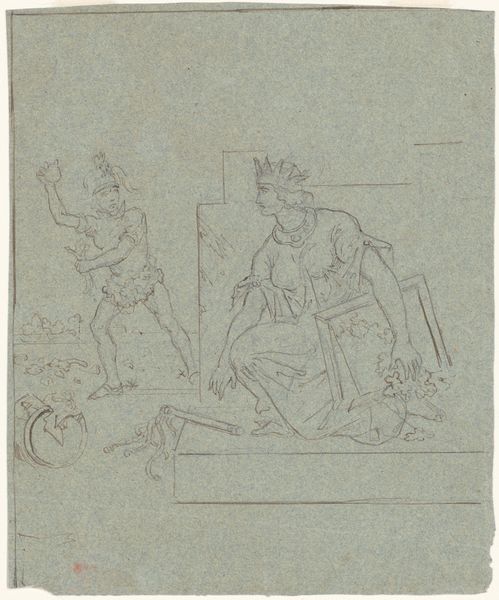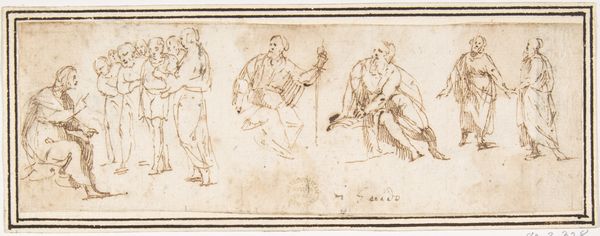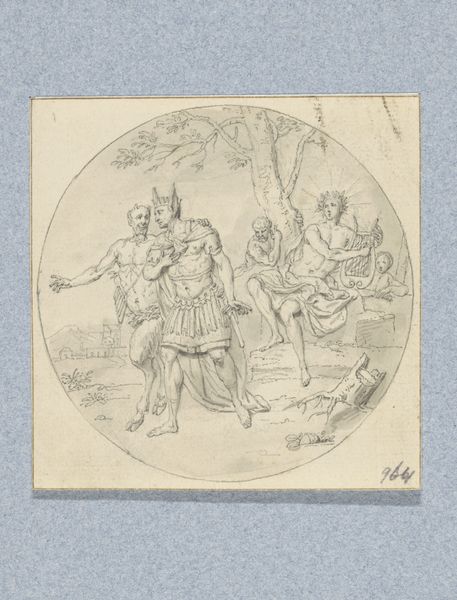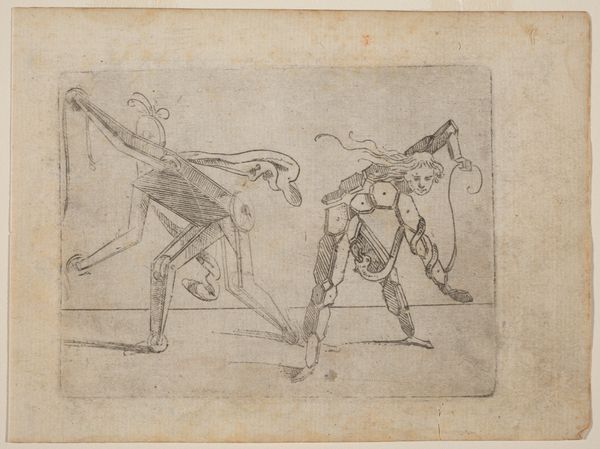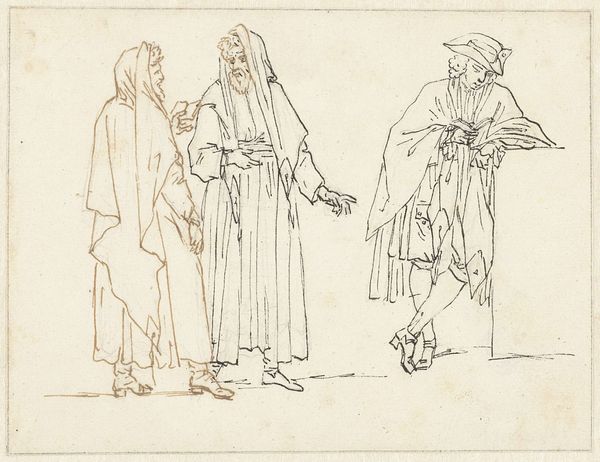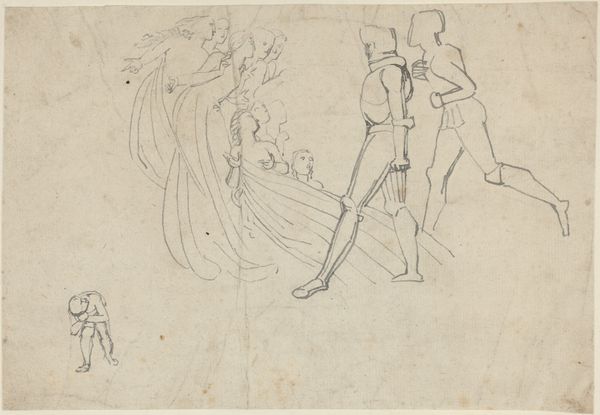
drawing
#
drawing
#
neoclacissism
#
figuration
#
line
#
history-painting
Dimensions: 170 mm (height) x 210 mm (width) (bladmaal)
Curator: This delicate drawing is titled "Richelieu for Rhadamanthos", a work created by J.F. Clemens sometime between 1797 and 1822. What strikes you immediately? Editor: It’s austere, almost unfinished. The minimal lines create an incredible sense of tension; both figures are poised, yet somehow vulnerable. The starkness speaks volumes. Curator: Indeed. Clemens, a prominent figure in the circle around Asmus Carstens, adopted the neoclassical style. In this drawing, Clemens presents Cardinal Richelieu before Rhadamanthus, a judge in Hades in Greek mythology. Clemens seems preoccupied by this tense meeting. Editor: The scene is compelling. Richelieu, a powerful political figure, confronted by divine justice… it prompts questions about power, accountability, and morality. How can the political body be judged by ancient principles? The setting is not described, yet we imagine a barren land. The meeting between a cleric and a god suggests inherent issues of temporal law against moral imperative. Curator: This drawing clearly participates in a larger historical trend of reckoning with figures of authority in the wake of revolutionary upheaval. The line work is quite interesting; it’s simple, allowing viewers to bring their interpretations and biases to fill the blank space, so to speak. Editor: Absolutely. I'm particularly struck by the artist's choice to depict both figures with such clear expressions: Richelieu appears to plead or perhaps implore. The other stares ahead or above; the scene speaks to the eternal questions around abuse of power and moral reckoning, themes as timely today as ever. Clemens gives them a quiet and personal intimacy, no grand spectacle. This speaks more loudly to these themes. Curator: Very insightful observations. It reveals so much about Clemens' concerns at the time, the revolutionary moment, and anxieties about powerful people. The piece certainly invites consideration of timeless philosophical concepts, doesn't it? Editor: Precisely. Thank you for revealing some fascinating historical context behind Clemens’ rendering of history.
Comments
No comments
Be the first to comment and join the conversation on the ultimate creative platform.
